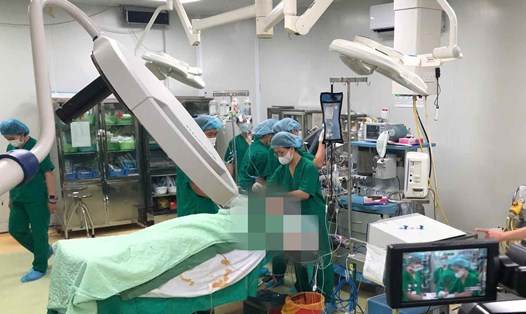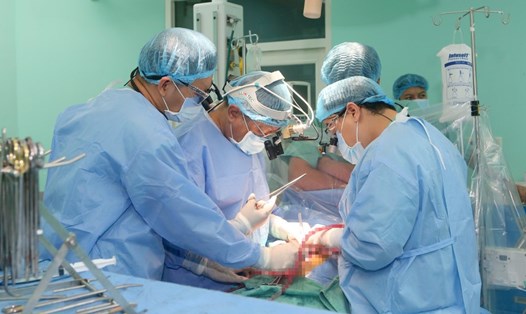According to Dr. Nguyen Hong Van Khanh - Deputy Head of the Department of Hepatobiliary Pancreas and Liver Transplantation at Children's Hospital 2, from the beginning of 2024 until now, 6 children have received kidney transplants and 10 children have received liver transplants.
This is the largest number of pediatric patients receiving organ transplants in a short period of time at the hospital. In one week in August alone, doctors performed 3 liver transplants. The cases receiving liver transplants were a female patient in Binh Duong province (10 years old); a male patient in Hau Giang province (2 years old); and a male patient in Gia Lai province (3 years old). The children had cirrhosis and had been receiving regular treatment at the hospital.
Dr. Tran Thanh Tri - Head of the Department of Hepatobiliary Pancreas and Liver Transplantation at Children's Hospital 2 said that to perform 3 liver transplants in 1 week, experts had to arrange and prepare very carefully. This is a good thing, because currently it takes a lot of time to monitor a patient after the transplant.
It is expected that in November, the hospital will prepare to transplant livers for 4 pediatric patients, and at the same time prepare several other backup cases. The increase in transplant speed has contributed to saving the lives of many pediatric patients, reducing the number of patients waiting for transplants. This comes from the Ministry of Health's decision to recognize Children's Hospital 2 as a qualified medical facility to perform the technique of removing and transplanting kidneys and livers from living donors and brain-dead donors.
Dr. Van Khanh added that the need for organ transplants for children at the hospital is still quite high. For children with indications for liver transplants, there are more than 100 children. For children with indications for kidney transplants, there are more than 70 cases.
Dr. Dang Xuan Vinh - Head of the General Planning Department of Children's Hospital 2 - commented that the number of pediatric patients who received transplants in a short time has shown the efforts of doctors and nurses. It is expected that as soon as the hospital's high-tech treatment center is completed next year, it will contribute to promoting organ transplant activities for pediatric patients. To date, the total number of kidney transplants at the hospital is 32 cases, the number of liver transplants is 41 cases.
Organ transplantation is the last resort, bringing life to the patient.
According to the Ho Chi Minh City Department of Health, organ transplantation is a surgical treatment method that replaces a diseased organ with a corresponding organ from another person.
This is considered the last resort, bringing life to end-stage organ failure diseases that are no longer amenable to conservative treatment, such as chronic renal failure, some chronic liver diseases, metabolic diseases, as well as malignant diseases. Organs that can be replaced or transplanted include the heart, kidneys, liver, lungs, intestines, pancreas, and bone marrow.
Depending on the source of the transplanted organs, they can be divided into two main groups: organ transplants from brain-dead donors and organ transplants from living donors. For many reasons, the source of organs from brain-dead donors in Vietnam in particular and in Asian countries in general is still limited. Therefore, the method of organ transplants from living donors is prioritized in many countries around the world, this method is especially suitable for children who need organ transplants.
Children's Hospital 2 is one of the first children's hospitals to perform kidney and liver transplants for children very early, the first kidney transplant was performed in 2004 and the first liver transplant in 2005.










